
The Queen of Spain fritillary is a butterfly of the family Nymphalidae.
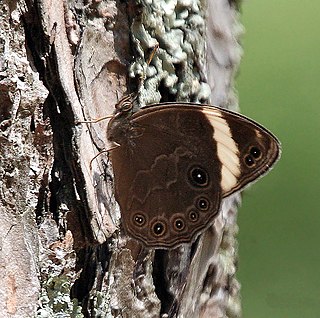
Lethe is a genus of butterflies in the subfamily Satyrinae of the family Nymphalidae. The genus was erected by Jacob Hübner in 1819. It includes the treebrowns, woodbrowns, foresters and their relatives. The species in the genus Lethe occur in temperate-tropical southern and eastern Asia, up to Indonesia and in North America.
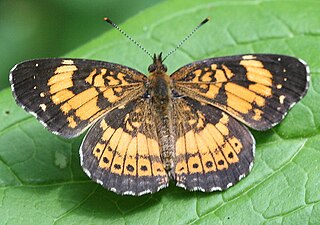
Chlosyne nycteis, the silvery checkerspot, is a species of Nymphalinae butterfly that occurs in North America. It is listed as a species of special concern in Connecticut and Maine, and is believed extirpated in Connecticut, Massachusetts, and New Hampshire.

Satyrodes eurydice, the eyed brown or marsh eyed brown, is a species of Satyrinae butterfly that is native to North America.
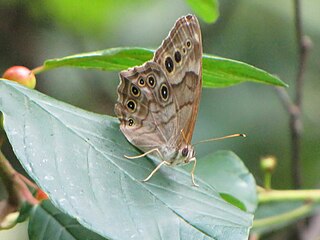
Enodia is a genus of butterflies of the subfamily Satyrinae in the family Nymphalidae.
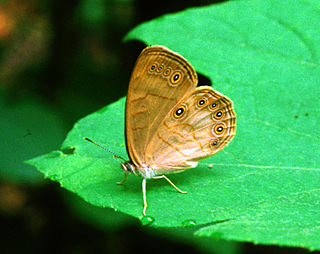
Satyrodes appalachia, the Appalachian brown or woods eyed brown is a species of Satyrinae butterfly that is native to North America.

Enodia portlandia, the southern pearly eye, Portland pearlyeye or just pearly eye, is a butterfly of the family Nymphalidae. It is found in the United States from eastern Oklahoma and eastern Texas east through the southeast.
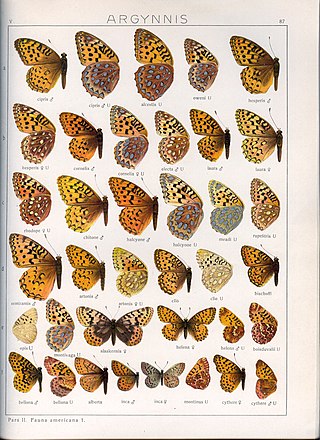
Boloria alaskensis, the mountain fritillary or Alaskan fritillary, is a species of fritillary butterfly in the family Nymphalidae. It was described by William Jacob Holland in 1900 and is found in North America and North European Russia. The MONA or Hodges number for Boloria alaskensis is 4462. The larvae feed on false bistort and alpine smartweed.
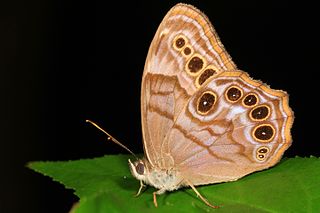
Lethe anthedon, the northern pearly-eye, is a species of butterfly of the subfamily Satyrinae in the family Nymphalidae. It is found in North America, from central Saskatchewan and eastern Nebraska east to Nova Scotia, south to central Alabama and Mississippi.

Speyeria nokomis, the nokomis fritillary, is a species of fritillary in the family of butterflies known as Nymphalidae. It is found in North America.
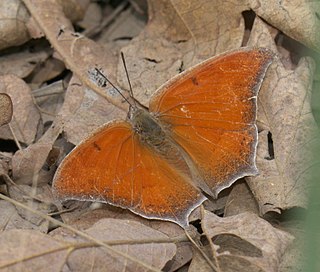
Anaea andria, known generally as the goatweed leafwing or goatweed butterfly, is a species of leafwing in the butterfly family Nymphalidae. It is found in North America.
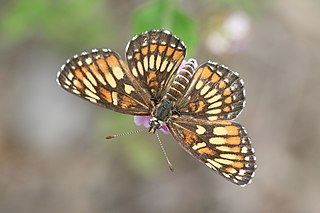
Chlosyne theona, the theona checkerspot, is a species checkerspots in the butterfly family Nymphalidae found in North America. The MONA or Hodges number for C. theona is 4508.

Adelpha basiloides, the spot-celled sister, is a species of admirals, sisters in the family of butterflies known as Nymphalidae. It is found in North and Central America.
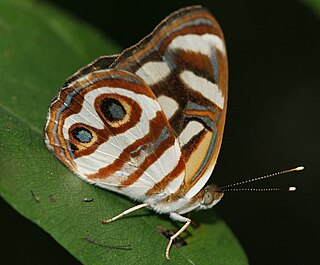
Dynamine dyonis, the blue-eyed sailor, is a species of tropical brushfoot in the butterfly family Nymphalidae. It is found in North America.

Lethe appalachia, known generally as the Appalachian brown or Appalachian eyed brown, is a species of brush-footed butterfly in the family Nymphalidae. It is found in North America.
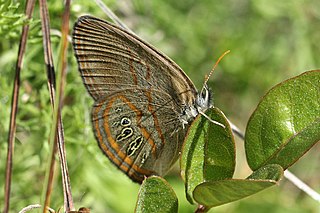
Neonympha areolatus, the Georgia satyr, is a species of brush-footed butterfly in the family Nymphalidae. It is found in North America.

Anaea are a genus of charaxine butterflies in the brush-footed butterfly family Nymphalidae. The butterflies are commonly known as leafwings. Members of the genus are found throughout the United States, Central America, and the Caribbean.


















